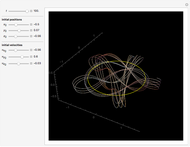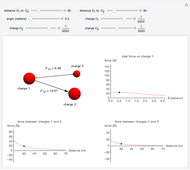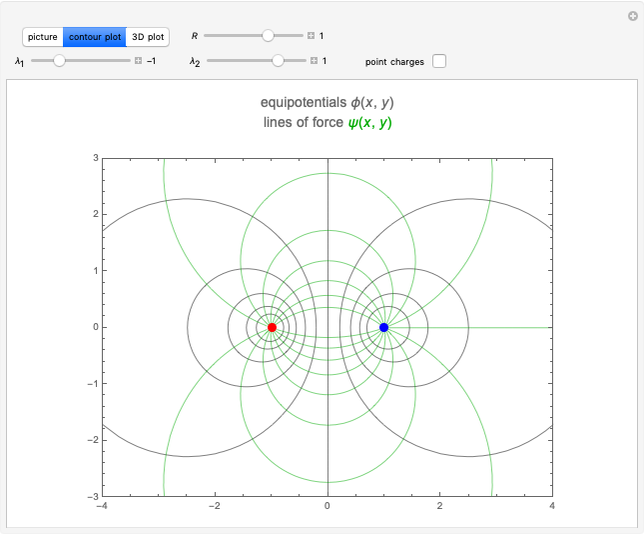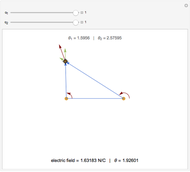Charged Particle in a Four-Wire Potential

Requires a Wolfram Notebook System
Interact on desktop, mobile and cloud with the free Wolfram Player or other Wolfram Language products.
This Demonstration shows the behavior of a positively charged particle placed in a system of four uniformly charged wires parallel to the  axis. The positions of the wires are symmetrical about the origin in the
axis. The positions of the wires are symmetrical about the origin in the  plane. The magnitude of linear charge density
plane. The magnitude of linear charge density  is the same on all the wires, but their signs are negative for the two wires with negative
is the same on all the wires, but their signs are negative for the two wires with negative  and positive for the wires with positive
and positive for the wires with positive  [1].
[1].
Contributed by: D. Meliga, A. Ratti and S. Z. Lavagnino (May 2019)
Additional contribution by: L. Lavagnino
Open content licensed under CC BY-NC-SA
Snapshots
Details
Snapshot 1: the particle is confined inside a potential well as the total energy intersects the potential energy in two different points
Snapshot 2: the particle can freely move toward  since the total energy is greater than the potential energy on the right side
since the total energy is greater than the potential energy on the right side
Snapshot 3: the particle can freely move toward  since the total energy is greater than the potential energy on the left side
since the total energy is greater than the potential energy on the left side
Reference
[1] C. Bianciardi, Problemi di fisica, Padova, Italy: Libreria Universitaria, 2012.
Permanent Citation



















